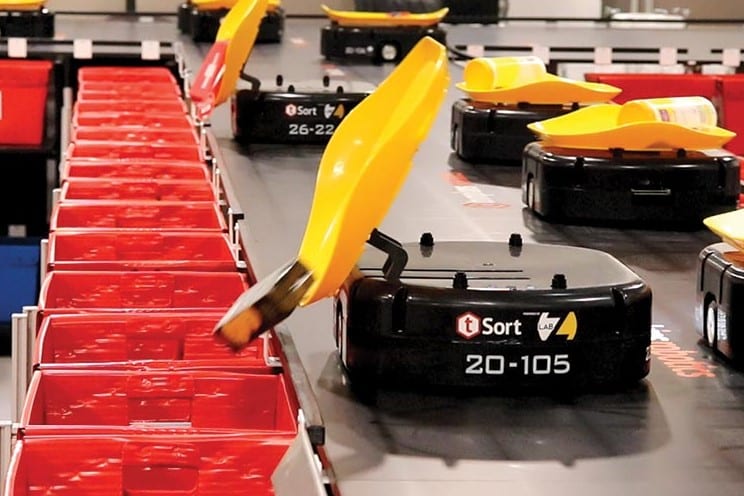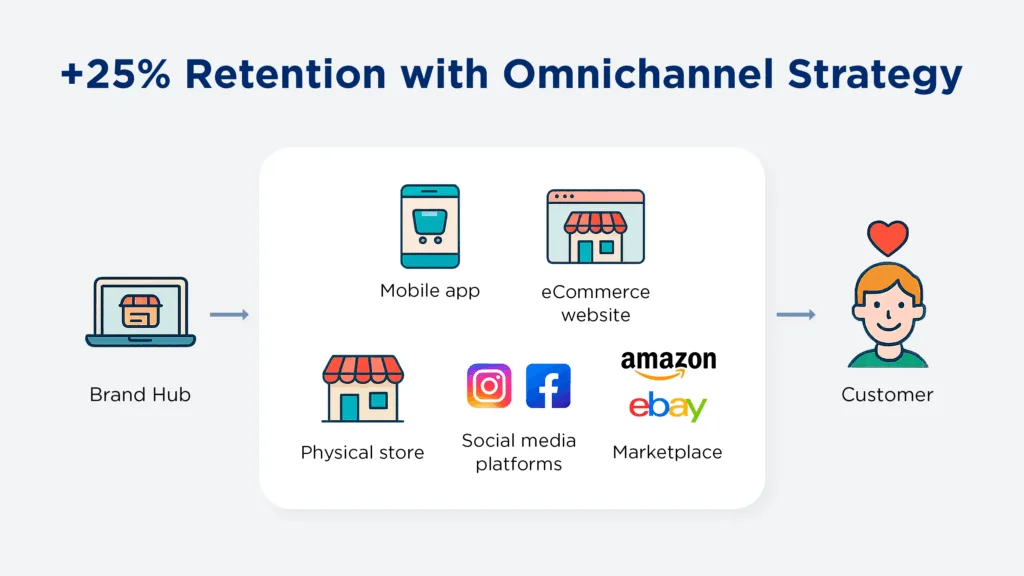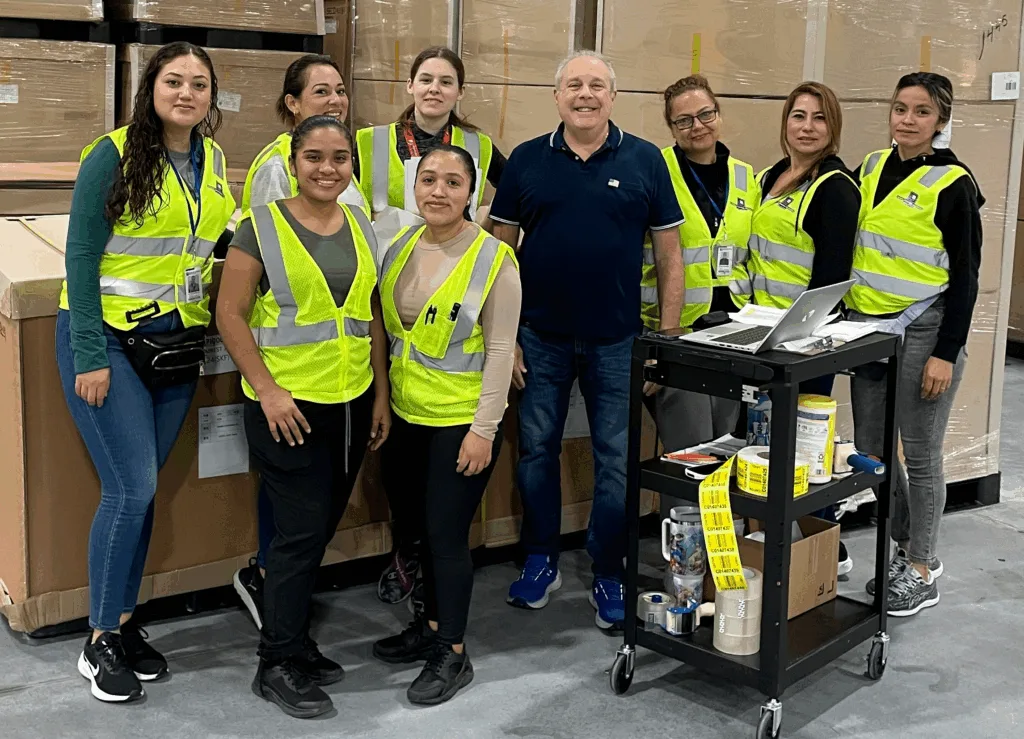eCommerce Fulfillment Trends to Drive Brand Growth in the Final Half of 2025
1. Embrace Automation and AI for Operational Excellence
The Trend: Automation and artificial intelligence (AI) are no longer futuristic concepts—they’re the backbone of modern eCommerce fulfillment. From robotic sorting systems that process thousands of picks per day to AI-driven demand forecasting, these technologies are transforming warehouses into hubs of efficiency and accuracy. Advanced Warehouse Management Systems (WMS), like those used by top 3PL providers, enable real-time inventory tracking, seamless order processing, and predictive analytics to anticipate consumer demand. This trend is critical as brands face pressure to handle higher order volumes while maintaining low error rates and operational costs.
Why It Matters for Growth: Automation and AI reduce manual labor costs, minimize errors, and enable brands to scale without proportional increases in overhead. For example, a brand processing 10,000 orders monthly can leverage automation to handle 50,000 orders without significantly expanding its workforce. AI-driven insights also help brands optimize inventory levels, preventing overstocking or stockouts, which directly impacts profitability. By streamlining operations, brands can redirect savings into marketing, product development, or customer acquisition, fueling top-line growth.
- Partner with Tech-Savvy 3PLs: Choose fulfillment partners that integrate automation, such as robotic sortation or conveyor systems, to handle high-volume operations. Look for 3PLs with WMS platforms like Manhattan Associates or INFOR TMS, which offer real-time visibility and integrations with over 75 eCommerce platforms, including Shopify, Amazon, and WooCommerce.
- Leverage AI for Forecasting: Use AI tools to predict seasonal demand spikes, especially during the Q4 holiday rush. This ensures inventory is positioned strategically, reducing shipping costs and delivery times.
- Start Small, Scale Smart: For smaller brands, begin with semi-automated solutions, such as barcode scanning or automated labeling, to improve efficiency without overwhelming initial investments. As revenue grows, transition to fully automated systems.

Real-World Impact: Brands that adopt automation can reduce order processing times by up to 30%, according to industry reports, leading to faster delivery and higher customer satisfaction. This operational efficiency translates into repeat purchases and increased revenue.
2. Optimize Nationwide Last-Mile Delivery for Speed
Why It Matters for Growth: Fast, reliable delivery drives customer satisfaction and loyalty, directly impacting repeat purchase rates and brand reputation. A 2024 study found that 73% of consumers are more likely to shop with brands offering free or fast shipping. By reducing delivery times and logistics costs, brands can offer competitive pricing or free shipping promotions, attracting new customers and boosting sales. FTZ programs further enhance profitability by lowering import-related expenses, freeing up capital for growth initiatives.
- Choose a 3PL with Nationwide Reach: Partner with fulfillment providers that operate multiple shippoints to minimize transit times. Ensure their network covers both coasts and central regions for maximum U.S. coverage.
- Utilize FTZ Benefits: Work with 3PLs offering FTZ services to defer duties on imported goods until they’re sold, reducing upfront costs. This is especially valuable for brands sourcing products internationally.
- Invest in Real-Time Tracking: Provide customers with accurate, real-time delivery updates to enhance trust and reduce support inquiries. This improves the post-purchase experience, encouraging repeat business.
Real-World Impact: Brands leveraging nationwide fulfillment networks can achieve 20-30% savings on shipping costs, according to logistics studies, while offering faster delivery options that drive higher conversion rates.
3. Master Omnichannel Fulfillment for Customer Loyalty

The Trend: Omnichannel retail is the new norm, with consumers shopping across B2B, DTC, and marketplace channels like Amazon, Walmart, and TikTok Shop. Successful brands integrate these channels seamlessly, ensuring consistent inventory availability and delivery experiences. Value-added services, such as kitting, custom packaging, and personalized unboxing, elevate brand perception and create memorable customer interactions. Flexible, cross-trained warehouse teams and same-day fulfillment capabilities are critical to meeting diverse channel demands.
Why It Matters for Growth: Omnichannel fulfillment builds customer loyalty by providing a cohesive shopping experience, whether a consumer buys from a brand’s website or a third-party marketplace. Personalized touches, like branded packaging or custom inserts, increase perceived value, encouraging repeat purchases and word-of-mouth referrals. For SMEs, omnichannel strategies expand market reach, tapping into new revenue streams without requiring separate logistics for each channel.
How to Maximize It:
- Partner with Omnichannel Experts: Select 3PLs that support over 500 retailers and commerce platforms, ensuring compatibility with major marketplaces and DTC stores. Their expertise simplifies inventory synchronization across channels.
- Invest in Personalization: Offer value-added services like custom unboxing or bundled kits to differentiate your brand. For example, a beauty brand could include free samples in every order, boosting customer delight.
- Ensure Same-Day Fulfillment: Work with 3PLs capable of same-day pick-pack-ship to meet marketplace SLAs (service level agreements) and keep customers happy, especially during peak seasons.
Real-World Impact: Brands with strong omnichannel strategies see up to 25% higher customer retention rates, per industry data, driving long-term revenue growth.
4. Prioritize Sustainability for Cost and Brand Appeal
The Trend: Sustainability is a growing priority, with 68% of consumers willing to pay more for eco-friendly products (2024 NielsenIQ). In fulfillment, this translates to lean logistics, sustainable packaging, and precise inventory management to reduce waste. Advanced WMS platforms help brands optimize stock levels, minimizing overproduction and excess shipping. Cost-saving programs, like FTZs, further reduce transportation and insurance expenses, aligning sustainability with profitability.
Why It Matters for Growth: Sustainable practices lower operational costs, allowing brands to reinvest savings into growth areas like advertising or product innovation. Additionally, eco-conscious branding resonates with younger demographics, such as Gen Z and Millennials, who prioritize environmental responsibility. This strengthens brand loyalty and attracts new customers, boosting market share and revenue.
How to Maximize It:
- Adopt Sustainable Packaging: Partner with 3PLs offering recyclable or biodegradable packaging options to appeal to eco-conscious consumers. Highlight these efforts in marketing campaigns.
- Optimize Inventory with WMS: Use advanced WMS to maintain lean inventory levels, reducing waste and storage costs. This ensures products are available without tying up capital in excess stock.
- Leverage Cost-Saving Programs: Utilize FTZ or similar programs to lower logistics expenses, enabling competitive pricing or increased marketing budgets.
Real-World Impact: Brands adopting sustainable fulfillment practices can reduce logistics costs by 15-20%, per industry reports, while gaining a competitive edge in eco-conscious markets.

5. Scale with Customer-Centric Solutions
The Trend: Small and medium enterprises (SMEs) are driving eCommerce growth, with strong fulfillment demand projected through 2030 (Grand View Research). Scalable, customer-centric solutions—such as real-time order tracking, dedicated support, and flexible fulfillment—are essential for brands transitioning from startup to enterprise. Experienced 3PL teams, with tenure averaging over five years, ensure personalized service and operational reliability during growth phases.
Why It Matters for Growth: Customer-centric fulfillment builds trust and satisfaction, critical for scaling brands. Real-time tracking reduces customer inquiries, while dedicated support resolves issues quickly, fostering loyalty. Scalable solutions allow brands to handle seasonal spikes or rapid growth without compromising service quality, ensuring consistent revenue growth.
How to Maximize It:
- Choose Scalable 3PLs: Partner with providers offering flexible solutions, from small-batch fulfillment to enterprise-level operations. Ensure they have robust infrastructure to handle peak seasons.
- Prioritize Transparency: Implement real-time tracking and proactive communication to keep customers informed, reducing churn and enhancing brand reputation.
- Invest in Support: Work with 3PLs that provide dedicated eCommerce call centers to address customer needs promptly, turning potential issues into positive experiences.
Real-World Impact: Brands with customer-centric fulfillment see up to 30% higher customer lifetime value, according to eCommerce studies, driving sustainable growth.

Conclusion
The final half of 2025 is a pivotal time for eCommerce brands to capitalize on fulfillment trends that drive growth and profitability. By embracing automation, optimizing last-mile delivery, mastering omnichannel strategies, prioritizing sustainability, and scaling with customer-centric solutions, brands can unlock new revenue streams, build loyalty, and thrive in a competitive market. Partnering with innovative 3PL providers, like Komar Distribution Services, ensures access to nationwide networks, cutting-edge technology, and expertise to execute these strategies effectively. Ready to scale your brand?
Explore fulfillment solutions that align with your growth goals and finish 2025 strong.
